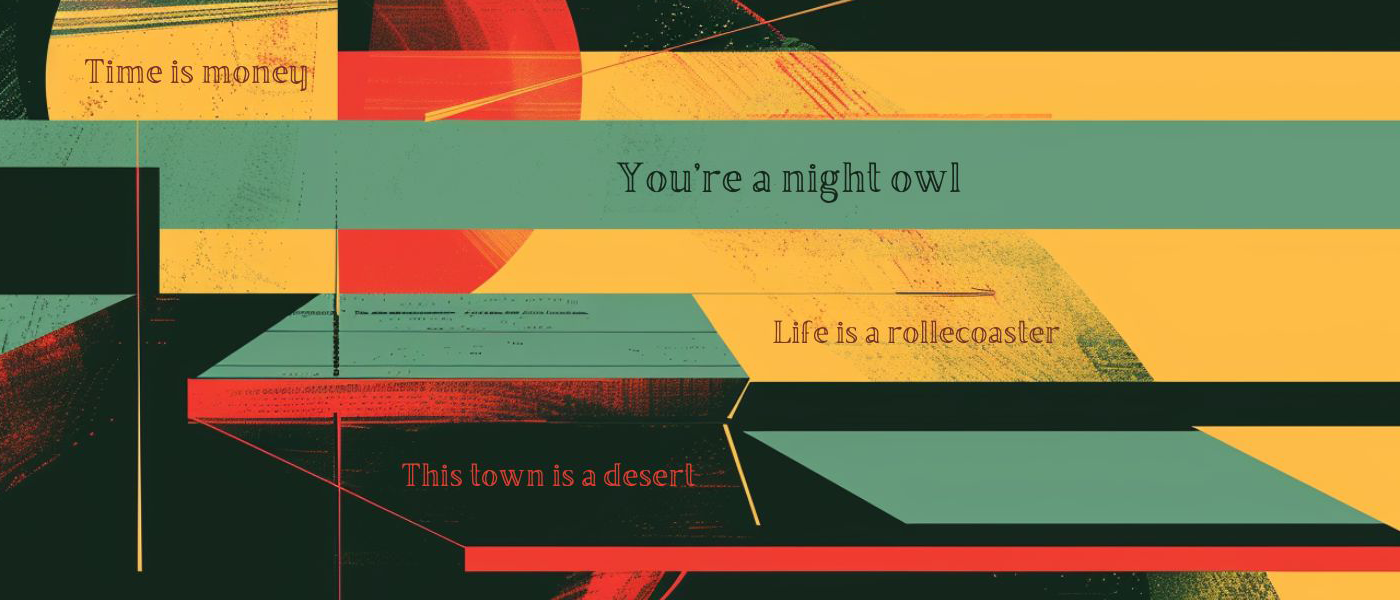Metaphors are a vital part of everyday communication and play a significant role in creative writing. By comparing unrelated concepts, they paint vivid images, making abstract ideas tangible and complex emotions relatable. This article will explore the definition of metaphors, provide examples of metaphors, and delve into various types of metaphors. Whether you’re a budding writer or simply curious about how language works, this guide will help you understand the characteristics of metaphors and how to create and use them effectively.
What is a Metaphor?
At its core, a metaphor is a figure of speech that makes a direct comparison between two unrelated things, suggesting they are alike in a significant way. Unlike similes, which use “like” or “as” for comparison, metaphors are more implicit, often leading to deeper meanings and interpretations.
Metaphor Definition and Examples in Literature
In literature, a metaphor is used to convey complex emotions or ideas in a more digestible and relatable way. The definition of a metaphor in literature often extends beyond simple comparisons, becoming a tool for revealing deeper truths about characters, themes, and settings.
For instance, in Shakespeare’s “As You Like It,” the line “All the world’s a stage” is a metaphor that equates life to a theatrical performance, subtly implying that people are merely players acting out roles.
Another example of a metaphor in literature is from F. Scott Fitzgerald’s “The Great Gatsby,” where the green light at the end of Daisy’s dock becomes a metaphor for Gatsby’s unattainable dreams.
Literature employs metaphors to reveal hidden truths about characters, themes, and settings. A metaphor isn’t always about a direct comparison but often invites readers to interpret layered meanings. Writers use metaphors as a bridge between the known and the unknown, offering a way to express universal truths through personal experiences.
Types of Metaphors
Metaphors come in various forms, each offering unique layers of meaning. Here are some common types of metaphors:
Dead Metaphor
These are metaphors that have become so common in everyday language that we no longer notice their figurative meaning. An example is “the foot of the mountain.”
Extended Metaphor
These stretch over several lines or even an entire text, allowing the writer to explore multiple aspects of the comparison. Shakespeare’s “All the world’s a stage” is also an extended metaphor.
Mixed Metaphor
These combine two or more incompatible metaphors, often resulting in a humorous or confusing image, like “We’re sailing on uncharted waters with no paddle.”
Standard Metaphor
This is the simplest form, making a direct comparison, such as “Time is money.”
Implied Metaphor
These suggest the comparison indirectly. For instance, “She barked commands,” implies that the person is like a dog without explicitly saying so.
Visual Metaphor
Commonly used in art or film, visual metaphors present one object or action in place of another to convey an idea. An example would be a wilting flower used to symbolise death.
Metaphor Examples
What is an example of a metaphor? Here are a couple of examples of metaphors in action:
Metaphor Examples in Music
Many song lyrics use metaphors to express feelings and ideas. In “Blowing in the Wind” by Bob Dylan, the line “How many times must a white dove sail” uses the dove as a metaphor for peace, conveying a longing for social justice.
Common Metaphor Examples
Common metaphors are used in everyday speech, such as “a flood of emotions” or “a blanket of snow,” which vividly describe overwhelming feelings or the covering of snow, respectively.
Metaphor vs Simile
While both metaphors and similes compare two things, a simile explicitly uses “like” or “as.” For example, “Her smile was like sunshine” is a simile, whereas “Her smile was sunshine” is a metaphor. Metaphors tend to be more powerful because they draw comparisons without directly stating them. Similes, on the other hand, make comparisons more obvious and clear.
Metaphor vs Analogy
Metaphors and analogies both draw comparisons, but an analogy is more detailed, often explaining the comparison between two ideas or situations. For instance, a metaphor may say, “Life is a journey,” while an analogy would compare the stages of life to the steps in a journey, explaining the relationship between the two concepts.
How to Create a Metaphor
Creating a metaphor involves identifying two things that share an underlying similarity and then expressing that connection without using “like” or “as.” Start by thinking of what you want to describe, then ask yourself what other things have similar qualities. The key to crafting an effective metaphor is in the subtlety and precision of the comparison.
Here is an example of how to create a metaphor:
- Instead of saying, “The night was dark,” you could say, “The night was a blanket of shadows.”
How to Efficiently Use Metaphors: Best Practices
To use metaphors effectively, consider these tips:
- Know your audience: Avoid overly complex metaphors if they might confuse your readers.
- Be consistent: Stick to one metaphor at a time, or you risk creating mixed metaphors that could muddle your meaning.
- Use sparingly: Too many metaphors in a single piece of writing can overwhelm the reader. Aim for balance.
- Avoid clichés: Overused metaphors, such as “falling in love,” lose their impact due to familiarity.
Why Do Writers Use Metaphors?
Writers use metaphors because they add depth and meaning to their writing. Metaphors allow writers to convey complex ideas in a more vivid and imaginative way. They help clarify abstract concepts by associating them with something more familiar, enhancing the emotional impact of the writing. Through metaphors, writers can provide readers with new perspectives and insights.
FAQs on Metaphors and Similes
How can you identify a metaphor?
A metaphor makes a direct comparison between two unlike things without using “like” or “as.” For example, “The world is your oyster” is a metaphor.
What are the most famous metaphors?
Some famous metaphors include “Time is a thief,” “The world’s a stage” from Shakespeare, and “Hope is the thing with feathers” from Emily Dickinson.
How can you convert a simile to a metaphor?
To convert a simile into a metaphor, simply remove the words “like” or “as.” For example, the simile “He is as brave as a lion” becomes the metaphor “He is a lion.”
How can you convert a metaphor to a simile?
To convert a metaphor to a simile, add “like” or “as” to the comparison. For example, “Her eyes were stars” becomes “Her eyes were like stars.”
Read Also: What is a Modal Verb?
The Power of Figurative Language
Metaphors hold a unique power in communication, helping us convey complex thoughts and emotions in an accessible and often beautiful way. Whether you’re writing a novel, a poem, or even a personal statement, understanding and using metaphors will enrich your language and make your writing more engaging. Figurative language, when used effectively, transforms ordinary sentences into extraordinary expressions of meaning.
Unlock the full potential of your writing with our expert academic proofreading services. Let us help you refine your prose, polish your metaphors, and elevate your language to new heights. Contact us today to take your writing to the next level.




